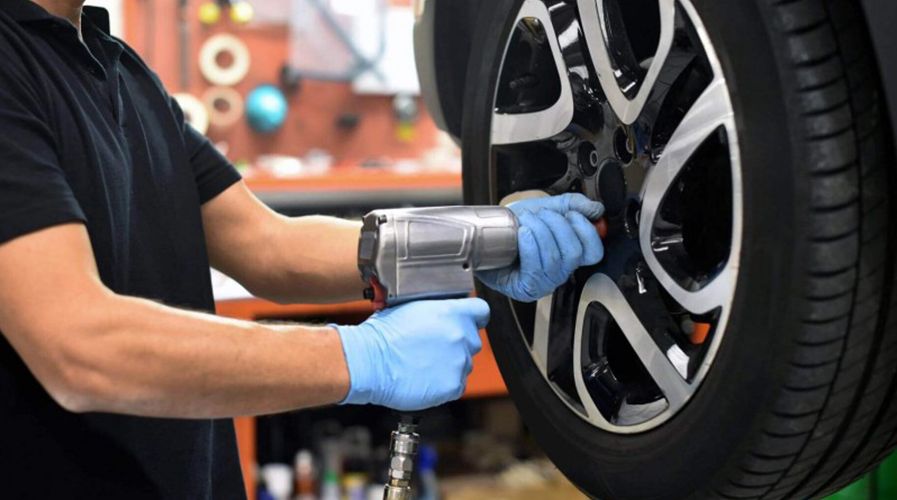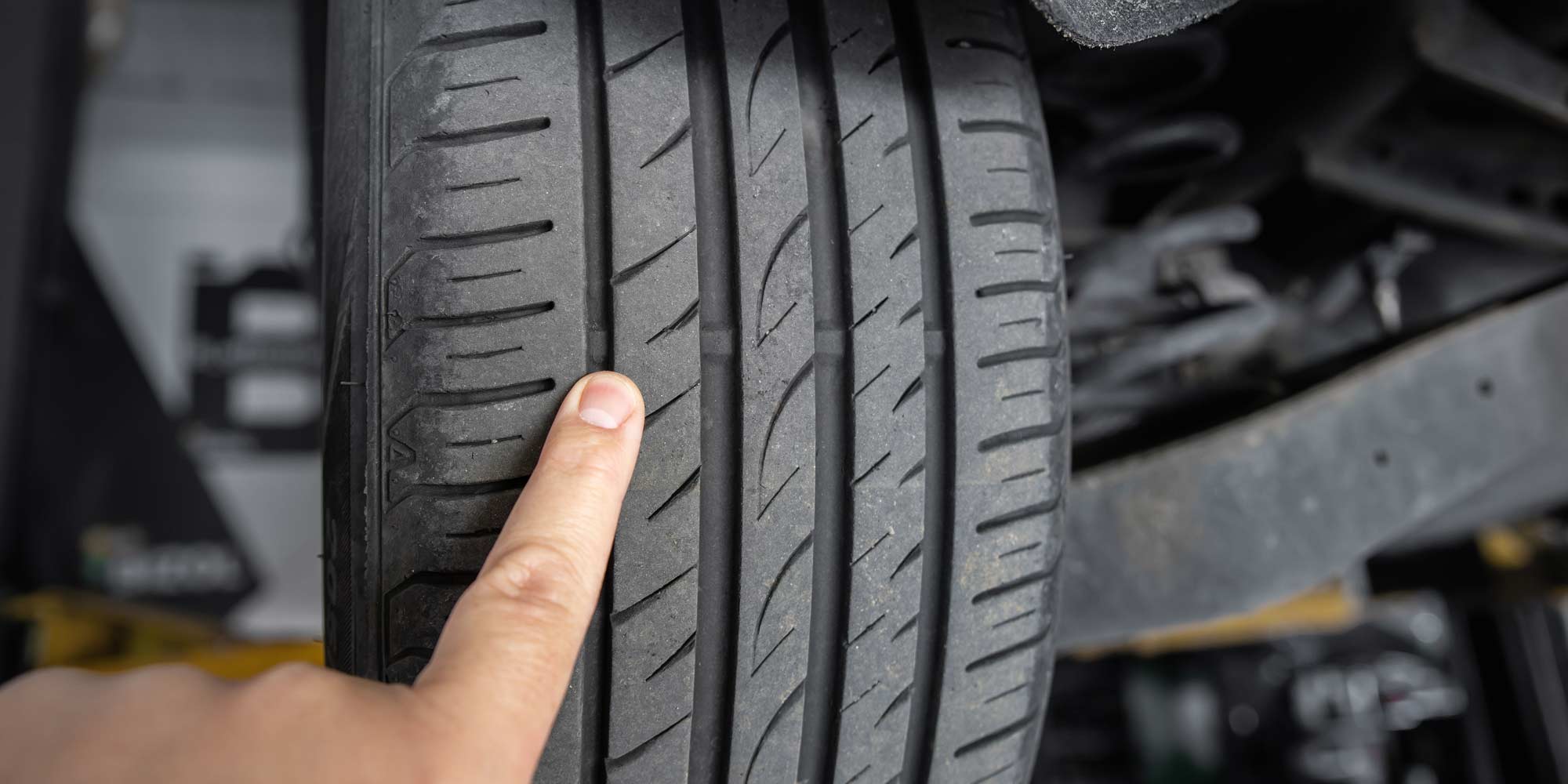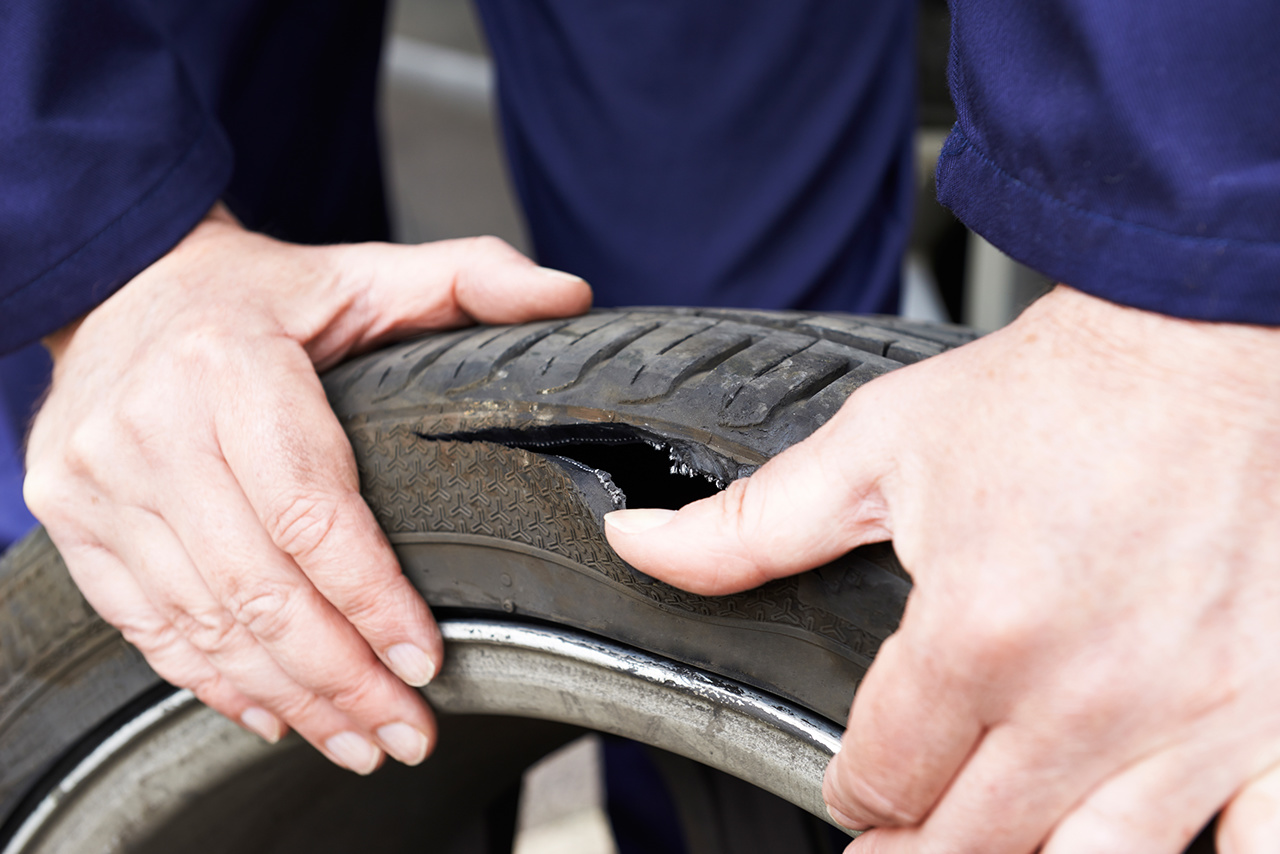7 Tire Safety Tips Every Car Owner Should Know
Cars are a blessing! From freedom to convenience they reward their owners with a lot. Nevertheless it's essential to care for and preserve them to ensure their proper functioning. Yet a major number of vehicle owners overlook the role of tire maintenance. Overlooking tire maintenance can be risky. They can affect the safety of vehicle performance and cost-effectiveness. That’s why Ofmum wants to help you out.
Ofmum is so excited to tell you about Discount Tire known for its expertise in car tire maintenance. This is an easy and reliable solution to shop for tires. Their goal is to assist you in maintaining your tires in optimal condition which is vital for your safety while driving.
This blog will provide comprehensive information on all aspects of tire upkeep. We'll discuss how to check tire pressure the importance of tire tread depth and the need for regular tire rotation. We'll also guide you on balancing and aligning tires spotting tire issues and caring for your spare tire. Let's begin this journey with Ofmum and Discount Tire guiding you towards better tire care and road safety.
Rev up your ride with the best wheels in town! Visit Discount Tire your go-to wheel retailer.
Tip 1: Regular Tire Pressure Checks
Regularly checking your tire pressure is a fundamental aspect of essential tire tips. Proper tire pressure is important for safety improving your vehicle's performance and enhancing fuel efficiency. This routine check helps avoid the dangers of underinflated or overinflated tires. That makes it a key practice in car tire maintenance.
Benefits
- Enhancing fuel efficiency by lowering rolling resistance
- Improves vehicle handling and driving safety
- Lowers the chances of tire blowouts as well as accidents
- Enhances the life of your tires and lowers uneven wear
- Keeps optimal tire performance along with ride comfort
Step-By-Step Guide
- Locate your vehicle’s tire pressure in the owner's manual or on the sticker on the door jamb.
- Utilize a dependable tire gauge to measure the pressure of each tire.
- Adjust the air in the tires either by inflating or deflating to align with the recommended pressure level.
- Perform this check when the tires are cold for an accurate reading
- Check your tire pressure regularly at least once a month and before long trips
Common Mistakes to Avoid
- Not checking the tire pressure regularly
- Overinflating or underinflating tires beyond recommended levels
- Ignoring the effects of temperature changes on tire pressure
- Neglecting to use a properly calibrated tire gauge
- Forgetting to check tire pressure before a lengthy journey
Tip 2: Monitor Tire Tread Depth
Monitoring your tire tread depth is important for vehicle tire safety. Adequate tread depth makes sure of good traction particularly in wet conditions. Worn tires increase the risk of dangerous situations like skidding or hydroplaning. Regular checks of your tire tread depth are essential for maintaining safe and effective tires.
Benefits
- Maintains necessary traction for safe vehicle handling
- Lowers the chances of accidents in wet as well as slippery conditions
- Alerts you when it's time to replace worn-out tires
- Helps avoid penalties for driving with unsafe tire tread depths
- Ensures consistent tire performance across various driving conditions
Step-By-Step Guide
- Locate the tread wear indicators within the tire grooves
- Use a tread depth gauge for measurements
- Check the depth at various points around every tire
- Replace the tire if the tread depth is below the legal limit
- Regularly inspect tread depth every month and before long journeys
Common Mistakes to Avoid
- Overlooking regular checks of tire tread depth
- Continuing to use tires with dangerously low tread depth
- Ignoring uneven tread wear across different tires
- Missing the signs of aging and wear in tire treads
- Forgetting to check tread depth more frequently in adverse weather conditions
Get a pro tire inspection at Discount Tire and hit the road with peace of mind.
Tip 3: Rotate Your Tires Regularly
Frequent tire rotation is a critical aspect of maintaining car tires yet it's frequently overlooked. It involves more than merely prolonging the lifespan of the tires. It's crucial for maintaining balanced handling and traction. Frequent rotation ensures that tires wear evenly. It is vital for safe driving and can contribute to better fuel economy. By incorporating tire rotation into your regular vehicle care routine you're taking a proactive step in preserving both the health of your tires and the overall safety of your vehicle.
Benefits
- Promotes uniform tire wear extending tire life
- Enhances vehicle handling and safety
- Helps maintain consistent traction and grip
- Can improve fuel efficiency due to reduced tire resistance
- Prevents vibration and noise issues related to uneven tire wear
Step-By-Step Guide
- Refer to your vehicle's manual for the rotation pattern
- Rotate tires each 5000 to 8000 miles or as suggested by the manufacturer
- Ensure tires are balanced after rotation for optimal performance
- Check and adjust tire pressure after rotation
- Regularly inspect tires for wear and tear during rotation
Common Mistakes to Avoid
- Skipping tire rotation in regular vehicle maintenance
- Not keeping up the correct rotation pattern for your vehicle
- Ignoring tire balance and alignment after rotation
- Overlooking tire pressure adjustments post-rotation
- Neglecting to check for tire damage or wear during rotation
Tip 4: Check Tire Balance and Alignment
Maintaining proper tire balance and alignment is a cornerstone of safe tire practices. These steps go beyond mere routine upkeep; they are vital for guaranteeing the best performance and safety of your vehicle. Correct alignment and balancing minimize tire wear improve control and avoid vibrations. Additionally they are crucial in extending the lifespan and maintaining the efficiency of your tires.
Benefits
- Enhances the smoothness of your ride by reducing vibrations
- Promotes even tire wear extending tire life
- Improves vehicle handling and driving safety
- Enhances fuel efficiency by lowering tire resistance
- Avoids unnecessary strain on the suspension system of a vehicle
Step-By-Step Guide
- It's advised to get your tires balanced and their alignment inspected every 6000 to 8000 miles.
- Seek the expertise of a professional for accurate tire balancing and alignment.
- Make sure that the alignment process includes adjustments to the tire angles.
- Conduct balance and alignment evaluations after installing new tires.
- Frequently examine your vehicle for indications of misalignment or imbalance in the tires.
Common Mistakes to Avoid
- Overlooking the need for tire balancing and alignment checks
- Ignoring signs of unbalanced tires like vibrations or uneven wear
- Delaying alignment corrections when signs of misalignment are present
- Not aligning and balancing tires after installing new ones
- Failing to consult a professional for accurate balancing and alignment
Tip 5: Inspect Tires for Damage
Regular inspection for tire damage is a critical element of tire safety guidelines. Tires are your vehicle's only contact with the road and their condition can impact your safety. Regular checks for cuts bulges or other abnormalities can prevent accidents and enhance vehicle performance. This proactive approach is critical for identifying issues early and keeping up safe driving conditions.
Benefits
- Ensures early detection of potential tire problems
- Prevents accidents caused by tire failures
- Maintains optimal vehicle performance and safety
- Saves costs by addressing issues before they worsen
- Enhances peace of mind through regular safety checks
Step-By-Step Guide
- Visually inspect tires for any signs of damage like cuts or bulges
- Feel for any irregularities or lumps on the tire surface
- Check for objects embedded in the tread
- Look for any signs of irregular wear or sidewall damage
- Consult a professional if any damage or unusual wear is detected
Common Mistakes to Avoid
- Ignoring minor damages can lead to bigger problems
- Missing regular inspections especially after driving on rough roads
- Overlooking the importance of professional evaluations for suspected damage
- Failing to replace damaged tires promptly
- Neglecting the impact of driving habits on tire wear and damage
Ready to turn heads? Check out our awesome selection of top-quality wheels at Discount Tire.
Tip 6: Spare Tire Maintenance
Maintaining your spare tire is an often overlooked aspect of essential tire tips. A spare tire is a lifeline in emergencies and its condition is just as crucial as your regular tires. Consistently inspecting and correctly storing your spare tire guarantees its readiness for use. This aspect of tire maintenance can transform a potential roadside emergency from a significant issue into a minor inconvenience.
Benefits
- Ensures the spare tire is ready for use in emergencies
- Avoids the hassle of a flat tire without a usable spare
- Extends the life of the spare tire with proper maintenance
- Enhances safety and preparedness on the road
- Saves time and stress during unexpected tire changes
Step-By-Step Guide
- Consistently monitor the pressure of your spare tire.
- Examine the spare tire for any evidence of damage or wear.
- Store the spare tire in a location that is cool and dry to avoid its deterioration.
- Maintain the spare tire's inflation at the level recommended by the manufacturer.
- Learn the procedure for switching to a spare tire.
Common Mistakes to Avoid
- Neglecting to check the spare tire's condition regularly
- Improper storage results in premature deterioration
- Overlooking the need to keep up proper air pressure
- Forgetting to include the spare tire in regular maintenance checks
- Being unprepared for how to use the spare tire in an emergency
Tip 7: Avoid Overloading Your Vehicle
Not overloading your vehicle is a key part of tire care advice. Excess weight can impact your tires resulting in increased wear and possible failure. It's crucial to understand your vehicle's weight capacity and adhere to it strictly. By avoiding overloading you ensure that your tires maintain optimal performance and longevity and you contribute to safer driving conditions.
Benefits
- Prevents excessive tire wear and tear
- Reduces the risk of tire blowouts from overloading
- Maintains vehicle balance and handling
- Ensures optimal braking performance
- Enhances the overall safety of your vehicle
Step-By-Step Guide
- Check your vehicle’s maximum load capacity in the manual
- Be thoughtful of the weight of passengers and cargo
- Divide weight evenly throughout the vehicle
- Adjust tire pressure if carrying heavier loads as per guidelines
- Regularly assess your vehicle’s load during use
Common Mistakes to Avoid
- Ignoring your vehicle’s load capacity limitations
- Uneven distribution of weight in the vehicle
- Failing to adjust tire pressure for heavier loads
- Overlooking the impact of overloading on vehicle handling
- Underestimating the wear on tires due to excess weight
ProTip: Tire Emergency Guide
Dealing with a tire emergency is a crucial aspect of vehicle tire safety. Knowing how to respond effectively is essential. This guide aims to equip car owners with vital knowledge and essential tire tips for managing tire emergencies. This can ensure you're prepared for unexpected situations on the road.
Preparation is Key
- Keep an Emergency Kit in Your Vehicle: Essential for any car tire maintenance plan your kit should include a spare tire jack lug wrench tire pressure gauge tire sealant and warning triangles or flares.
- Familiarize Yourself with Your Vehicle: Understanding how to use your vehicle’s emergency tools is fundamental for safe tire practices.
Handling a Tire Blowout
- Stay Calm and Maintain Control: A steady grip and calm approach are key in tire safety guidelines.
- Gradually Slow Down: Allow the vehicle to decelerate naturally aligning with safe tire practices.
- Steer Straight: Move to a safe location and signal your situation with hazard lights.
- Check for Traffic: Safety first – exit your vehicle only when it’s safe.
Dealing with a Flat Tire
- Find a Safe Spot to Pull Over: A stable flat surface is vital for effective car tire maintenance in emergencies.
- Use Your Hazard Lights: This is an essential step in tire safety guidelines.
- Replace the Flat Tire with Your Spare: Follow your vehicle's manual a critical part of vehicle tire safety.
Dealing with a Case of a Puncture
- Temporary Solutions: Tire sealant can be a short-term fix adhering to essential tire tips.
- Seek Professional Help: For serious issues professional assistance is recommended as per tire safety guidelines.
Safety Tips
- Never Ignore a Tire Problem: Addressing issues early is a cornerstone of safe tire practices.
- Keep Your Tires Properly Inflated: A crucial aspect of car tire maintenance.
- Regularly Inspect Your Tires: Early detection of issues is key to vehicle tire safety.
Wrapping Up
Tire safety is an often overlooked aspect of vehicle maintenance. However it can have an influence on your safety fuel efficiency and collective driving experience. By following the essential tire tips discussed in this blog you can ensure that your tires are well-maintained and ready to tackle the road ahead.
Regularly checking your tire pressure monitoring tread depth and rotating your tires will help extend their lifespan and improve fuel economy. Additionally keeping up proper tire balance and alignment will enhance performance and also result in a smoother and safer ride.
Being vigilant for tire abnormalities is crucial in identifying potential tire issues before they lead to accidents or further damage. By addressing these abnormalities promptly you can avoid potential hazards on the road.
Properly storing and maintaining your spare tire is equally important as it can be a lifesaver in emergencies. Regularly inspecting your spare tire and ensuring it has sufficient air pressure will give you peace of mind when you need it most.
Lastly it's essential to avoid overloading your tires and replace worn-out tires promptly. By complying with your vehicle's maximum load capacity and timely replacing tires as needed you can avert early tire wear preserve optimal vehicle handling and lower the likelihood of accidents.
Remember Discount Tire is always ready to assist you with expert tire advice and services. Stay informed stay safe and enjoy the peace of mind coming with well-maintained tires. By implementing these essential tire tips you are taking proactive steps to prioritize your safety and ensure a smooth and enjoyable driving experience.










